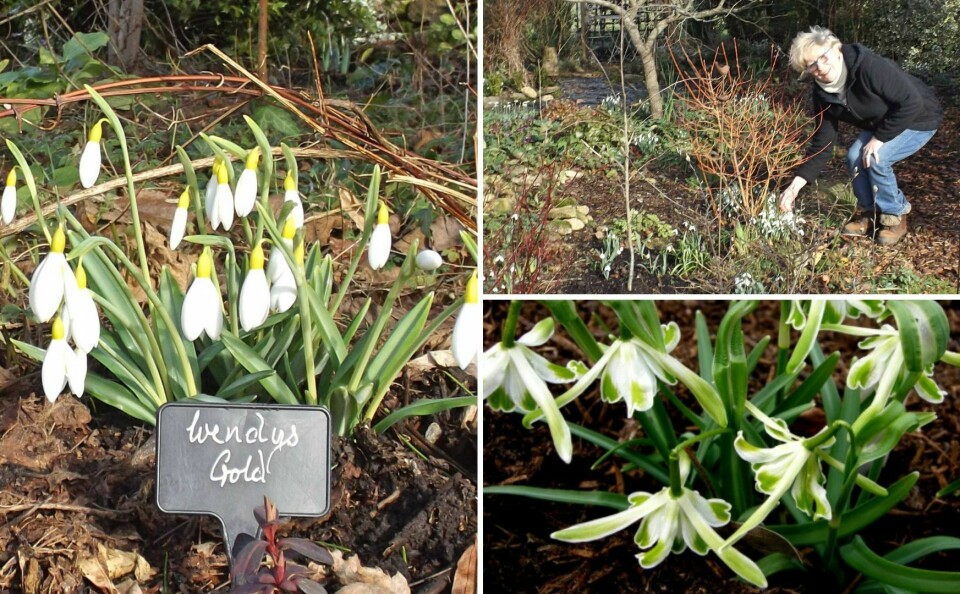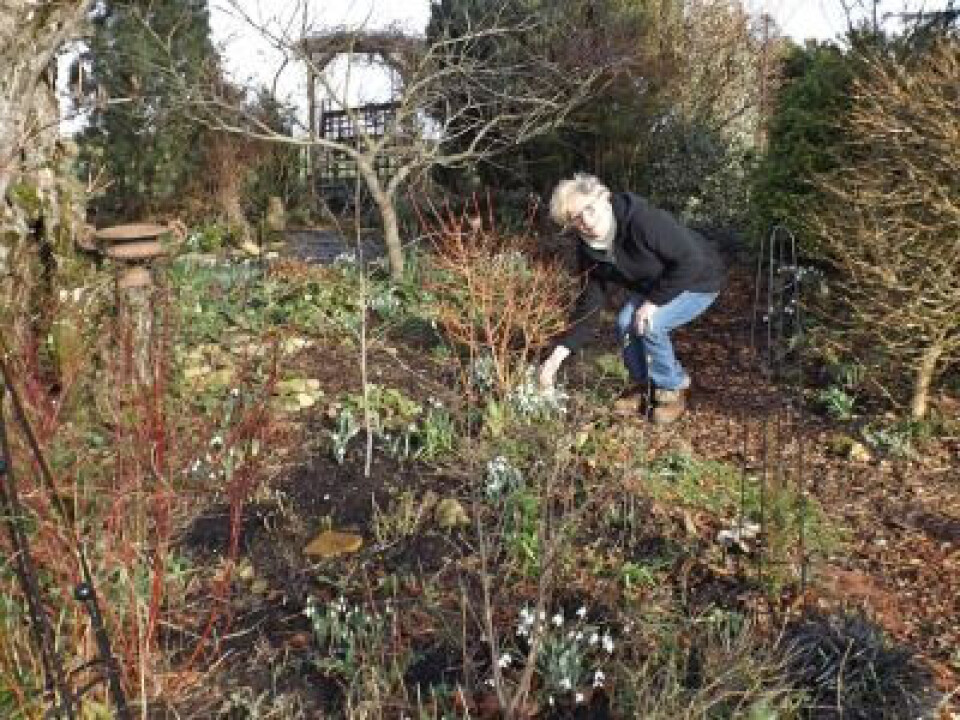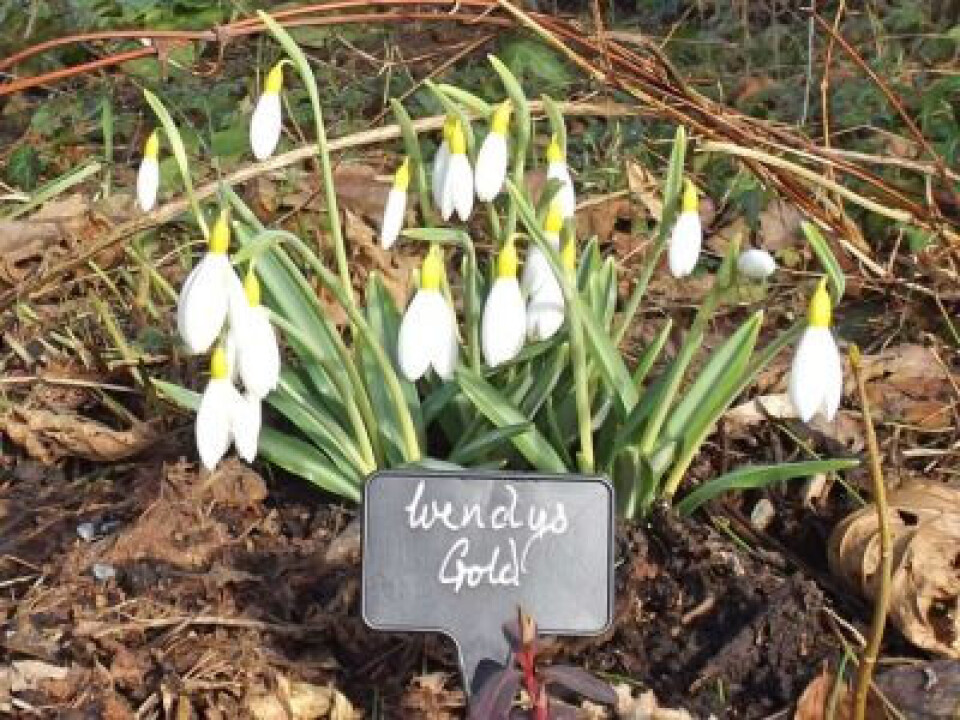-
Let your lawn grow, water for birds: how to help wildlife in your French garden
‘It is acceptable to have untidy hedgerows,’ says biodiversity spokesperson.
-
How to help hedgehogs in your garden in France
Follow these tips to create a healthy ecosystem for this protected species
-
How to pick and cook asparagus in France
Columnist Sue Adams explains how to make the most of the vegetable's short season
Snowdrop display is perfect showcase for French Open Gardens charity
We visit a founder member of the scheme and learn of her obsession with snowdrops or ‘perce-neige’

There can be no more potent symbol for hope and rebirth than snowdrops enacting their French name, perce-neige (piercing snow), or pushing their way out of frosty ground.
After the tinsel and lights have been put away, how pleasing it is to be reminded by these slender leaves that spring will come, that winter cannot last forever.
Someone who doesn’t want for these reminders is Sheila Cole.
With over 300 different varieties of snowdrops in her garden, Sheila could be described as a galanthophile.
Read more: Snowdrop obsession and hellebore heaven - two French gardens to visit
Brambles and nettles when they first moved in
The former nurse, and her husband, Ian, bought their house in Haute-Vienne (Limousin), some twenty years ago.
There wasn’t really a garden to speak of – just a south westerly facing slope with a mass of brambles and nettles and, importantly, a hawthorn tree. That tree, gnarled and ancient looking, remains, giving a more mature air to the garden.
Although the garden stretches to 3,000m2, including two orchards a pond, a parterre, a potager, a summerhouse and a pergola-covered dining terrace, it’s the 40 x 40m ornamental garden that exists simply to give a home to Sheila’s collecting, with a third devoted to her beloved snowdrops.

Photo: Sheila Cole has over 300 different varieties of snowdrops in her garden; Credit: Ian Cole
Snowdrops planted in moveable aquatic baskets
She says she always describes herself as a plantswoman, she is not a garden designer.
Gardening is in her DNA though – her mother was a keen gardener and her sister opens her Kent gardens regularly under the National Gardens Scheme (The Yellow Book as the guide is known).
Her right hand man, Ian, as Sheila calls him, makes compost and leaf mould to enrich and thickly mulch their sandy free-draining soil.
Sheila plants her snowdrops in aquatic baskets so they can more easily be lifted, divided, and kept separate, each precious variety from another, although she admits they can be shockingly promiscuous.
“They’re really not that fussy,” she says, “they’ll grow in most soil but they’ll rot in wet, heavy clay”.
Read more: Snowdrops for hope and salvia for colour in a February French garden
Snowdrop ‘Three Ships’ always appears on Christmas day
In my own winter-waterlogged Gascon clay plot, the only place a snowdrop grows is in a crack in concrete. When I tell her, Sheila laughs and says she found one happily coming up in a bark path with no soil at all.
She dispels the myth that snowdrops need to grow in woodland. Native to Europe and the Middle East, snowdrops are found wild from the Pyrenees right through to the Caucasus and Iran, as far south as Sicily and their northerly limit stretches above the 56th parallel in Russia.
Snowdrops have been cultivated for centuries and there are many garden escapees.
Sheila’s first snowdrops appear in December – appropriately she always sees snowdrop Three Ships arrive on Christmas Day but it is not usually until February that she holds her Open Days.

Photo: A clump of ‘Walrus’ snowdrops with outer petals like walrus’ tusks; Credit: Ian Cole
Snowdrop swaps to fill gaps in collection
As openings are weather dependent, visitors must check on the website before setting out. Sheila is happy to welcome people by appointment too and she would love to find other snowdrop fanciers willing to do swaps.
There are some 20,000 varieties so there are still gaps in her collection. When pressed to tell me her favourite snowdrops, she was reluctant – “how impossible!” – but the old varieties, snowdrop S. Arnott, with its fabulous perfume, and snowdrop Benhall Beauty, with its elegant stateliness, were mentioned.
Poppies give colour in summer as she waits for winter to arrive
Sheila has modern coloured snowdrops in green and yellow. She loves her spring garden with the red noses of the peonies forcing through, the nodding aquilegia and especially the dainty epimediums.
Read more: Best plants to add a pop of winter colour to your French garden
She urged me to look up Beesia, a low growing plant with a gorgeous leaf which makes lovely dark leathery ground cover mounds. Like heucheras and tirellas, it has thread-like wands with tiny white fairy flowers, like cartoon magic sparkle.
Sheila is not keen on summer, the snowdrop beds are covered with mulch and then a handful of annual poppy seed is scattered on top for a big splash of colour.
Autumn revives her interest and she revels in asters and salvia jamensis (the floriferous hardy bush type salvias) particularly. And then it won’t be long before the first of the snowdrops will be through and Sheila’s garden will light up again.

Photo: Sheila plants the snowdrops in in aquatic baskets so they can be easily lifted, divided, and kept separate; Credit: Ian Cole
Different gardens are open at various times of the year
Sheila became a founder member of Association Open Gardens/Jardins Ouverts following a meeting of the gardening club in La Souterraine (Creuse) in January 2014.
A decade later the organisation has increased the number of gardens opening from 15 to 50 and they open, not just in June as previously, but all year round depending on the special interests of the gardeners.
Sheila would like to inspire others to open their gardens. She takes such pleasure in meeting all her visitors and says she learns so much from them too.
Read more: Open Gardens group offers a warm welcome to all volunteers in France
The association has now raised over €150,000 for seriously ill and disabled children’s charities. Last year Sheila and Ian were responsible for €1,000 of that – not only do they open their garden but they are happy to travel to gardening clubs around France to give talks and to sell snowdrops. For more information on talks email Ian.
If you might consider opening your garden, go to the Open Gardens website and make contact.
She thought her garden was not good enough to open
Sheila pays tribute to the association’s support team who help to promote the openings and events, and deal with the boring but useful stuff, like insurance and administration.
When she was first accepted, Sheila remembers worrying that her garden wasn’t good enough, fretting about all sorts of unlikely possibilities.
The association is used to gardeners being unconfident or overmodest. They encourage people to get involved at whatever level they feel comfortable with.
They’d like garden co-ordinators all over France to support garden openers, to find new gardens to add to the roster, to make links with other garden groups.
€15 a year to visit as many gardens as you like
If you don’t want to open your own garden, there are all sorts of ways, beyond just becoming a member, in which you can help.
Most, but not all, Open Gardens do teas, so baking and serving, raising plants for sale or just helping on the gate are all invaluable roles. Such sales raise about 30% of the total in any year.
You can also support the association by becoming a member. For just €15 a year you can visit any (as many as you like) of the open gardens for no further payment. It is important to stress this as some visitors have been confused. You can join at the gate of the first garden you visit or you can sign up online (there is a €1 administration charge to cover the external transaction costs).
For more information and to explore the gardens to visit, please visit the website www.opengardens.eu
Related articles
January flowers in your French garden with scented viburnum
French gardens to delight visitors in the bright, cold days of winter
Gardening hardiness zones in France and how plants adapt to the cold
























